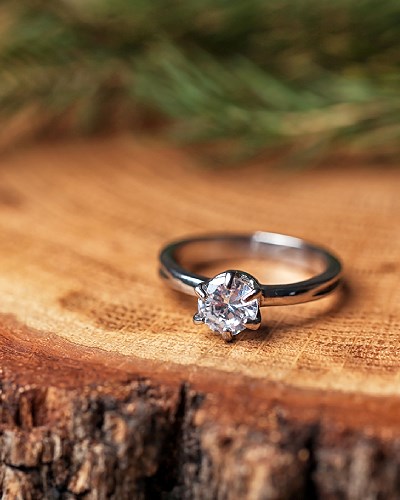The Cultural Significance of Jewellery

Jewellery has been an integral part of human culture for thousands of years. It is more than just adornment; it carries deep cultural, social, and personal significance. From ancient civilizations to modern societies, jewellery has been used to convey messages of power, status, love, and tradition. This thejewellerymag post explores the rich cultural significance of jewellery across different societies and time periods.
Historical Overview of Jewellery
Ancient Civilizations
In ancient civilizations like Egypt, Mesopotamia, and India, jewellery was often associated with divine and supernatural powers. The Egyptians believed that certain gemstones had protective properties. For example, the scarab beetle was a symbol of regeneration and protection in ancient Egypt, often used in amulets and jewellery.
Medieval Europe
During the Middle Ages in Europe, jewellery was a marker of social status and wealth. Nobility and royalty adorned themselves with intricate pieces made from precious metals and gemstones to display their power and prestige. Religious symbols were also prevalent, reflecting the dominant influence of Christianity.
Renaissance and Baroque Periods
The Renaissance and Baroque periods saw a surge in the craftsmanship of jewellery. Detailed and elaborate designs became popular, reflecting the cultural revival of art and beauty. Jewellery pieces from this era often featured religious and mythological themes, showcasing the wearer’s education and appreciation for the arts.
Jewellery in Different Cultures
Indian Jewellery
India has a long and rich tradition of jewellery-making, with each region having its own unique styles and designs. Jewellery plays a crucial role in Indian culture, especially in weddings and religious ceremonies. Gold is particularly significant, symbolizing wealth, prosperity, and divine blessings. Mangalsutra, a necklace worn by married women, is a prominent example of culturally significant Indian jewellery.
African Jewellery
African jewellery is diverse and often made from locally sourced materials such as beads, shells, and metals. Each piece carries significant cultural meanings, often related to status, age, and social roles. For instance, Maasai beadwork is not only decorative but also serves as a form of communication, indicating the wearer’s age and marital status.
Native American Jewellery
Native American jewellery is deeply rooted in spiritual and cultural practices. Turquoise is a commonly used stone, believed to offer protection and healing. Jewellery pieces often incorporate symbols of nature and spirituality, such as animals and celestial bodies, reflecting the close relationship between Native American communities and the natural world.
Chinese Jewellery
In Chinese culture, jewellery is often imbued with symbolism and meaning. Jade is highly valued for its beauty and supposed protective qualities. Dragons and phoenixes, common motifs in Chinese jewellery, symbolize power, prosperity, and balance. Gold jewellery is traditionally given during celebrations such as weddings and the Lunar New Year.
Symbolism and Meaning in Jewellery
Love and Commitment
Jewellery is a powerful symbol of love and commitment. Engagement rings and wedding bands are perhaps the most universal examples. The tradition of giving rings dates back to ancient Rome, where rings were used to signify ownership and a promise of fidelity. Today, they represent enduring love and partnership.
Rites of Passage
Jewellery often marks significant life events and rites of passage. In many cultures, pieces of jewellery are given to celebrate milestones such as births, coming-of-age ceremonies, and graduations. These items serve as lasting reminders of important moments and transitions.
Protection and Healing
Throughout history, certain types of jewellery have been believed to offer protection and healing. Amulets and talismans, often crafted into jewellery, were worn to ward off evil spirits and bring good luck. Crystals and gemstones are still used in modern holistic practices for their supposed healing properties.
Status and Wealth
Jewellery has long been a marker of status and wealth. In many cultures, the amount and quality of jewellery worn can indicate social standing and financial prosperity. For example, in ancient Rome, only certain classes were allowed to wear specific types of jewellery, reinforcing social hierarchies.
Modern Perspectives on Jewellery
Fashion and Self-Expression
In contemporary society, jewellery is often a form of self-expression and fashion. People choose pieces that reflect their personal style, values, and identity. The trend towards customized and personalized jewellery allows individuals to wear pieces that hold unique significance to them.
Sustainability and Ethics
There is a growing awareness of the ethical and environmental implications of jewellery production. Consumers are increasingly seeking out sustainably sourced and ethically made jewellery. Brands are responding by offering pieces made from recycled materials and ensuring fair labor practices in their supply chains.
Technology and Innovation
Advancements in technology have revolutionized the jewellery industry. 3D printing and computer-aided design have opened up new possibilities for intricate and innovative designs. These technologies allow for greater customization and precision, making unique pieces more accessible.
Conclusion
As per the stylezmag the Jewellery is much more than mere decoration; it is a profound expression of culture, identity, and emotion. From ancient amulets to modern personalized pieces, jewellery carries meanings that transcend time and geography. Understanding the cultural significance of jewellery can enhance our appreciation of these beautiful objects and the stories they tell.





